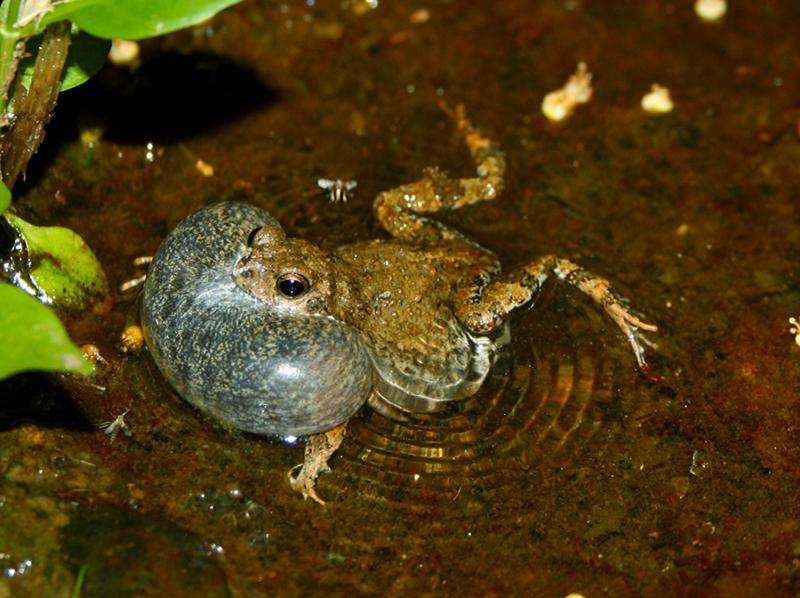August 28, 2015 report
Study shows female frogs susceptible to 'decoy effect'

(Phys.org)—A pair of researchers has found that female túngaras, frogs that live in parts of Mexico and Central and South America, appear to be susceptible to the "decoy effect." In their paper published in the journal Science, Amanda Lea and Michael Ryan describe lab experiments they carried out with female frogs and recorded calls by males, and what they found during their observations.
In the wild, male túngaras offer one of two types of calls when looking to attract a female; one sounds a little like a whine, while the other has more of a chuck sound—the males also alter the duration of the call. Prior studies have shown that females tend to prefer calls that are low (indicating a bigger frog) and that last a little longer. But, the research duo report, the females can be caused to change their mind under the right circumstances.
Scientists that study human behavior have found that there is an odd thing that happens when people go to buy something, a used car for example. If shown two cars, a cost minded customer is more likely to choose a cheap small car over a bigger more expensive one—unless they are also shown one that is similar to the bigger one, but costs more—that can cause some customers to change their minds and pick the intermediate option, rather than the one that is cheapest—something that has been called the "decoy effect." And now it appears that some female frogs are susceptible to it as well.
In their study Lea and Ryan placed female frogs in an enclosure that also held three speakers, placed some distance apart. The researchers played male frog noises on the speakers and watched to see which speaker attracted the female. They noted that as expected, when given two options, a very attractive call and one considered intermediate, the female generally went with the more attractive call option. But when three calls were made, that were highly attractive, intermediately attractive, and of low attractiveness, the females tended to go with the intermediate choice instead.
The researchers do not really know why the females responded they way they did, but plan to conduct more studies to see if they can find out—they suspect it may have an evolutionary impact that is not readily apparent.
More information: Irrationality in mate choice revealed by túngara frogs, Science 28 August 2015: Vol. 349 no. 6251 pp. 964-966. DOI: 10.1126/science.aab2012
ABSTRACT
Mate choice models derive from traditional microeconomic decision theory and assume that individuals maximize their Darwinian fitness by making economically rational decisions. Rational choices exhibit regularity, whereby the relative strength of preferences between options remains stable when additional options are presented. We tested female frogs with three simulated males who differed in relative call attractiveness and call rate. In binary choice tests, females' preferences favored stimulus caller B over caller A; however, with the addition of an inferior "decoy" C, females reversed their preferences and chose A over B. These results show that the relative valuation of mates is not independent of inferior alternatives in the choice set and therefore cannot be explained with the rational choice models currently used in sexual selection theory.
Journal information: Science
© 2015 Phys.org


















